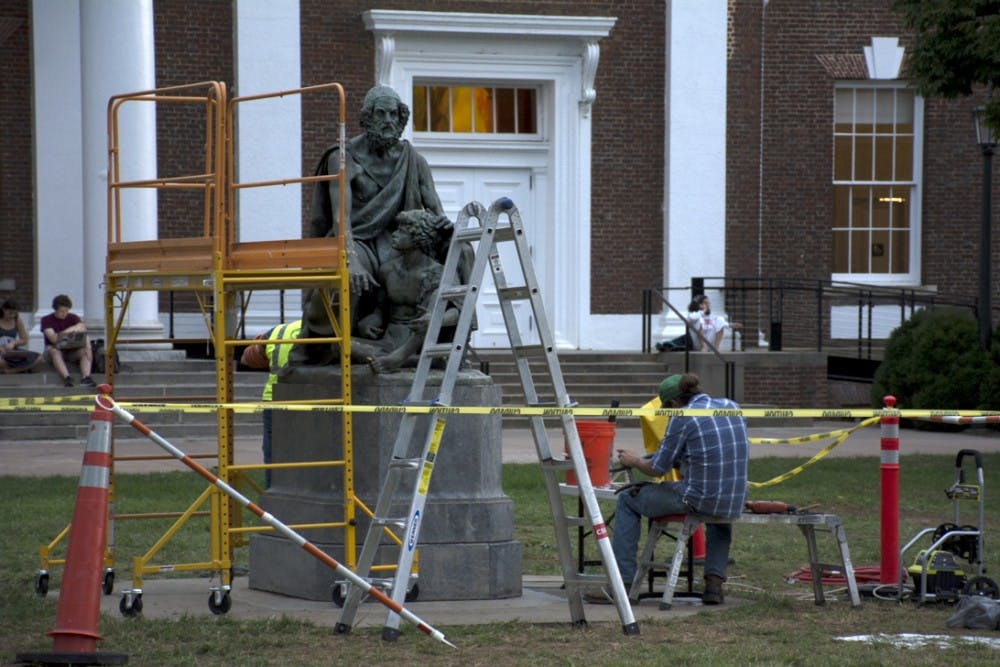The University’s Homer Statue, built by Jewish-American sculptor Moses Jacob Ezekiel in 1907 as the “Blind Homer With His Student Guide,” is currently under restoration on the South Lawn and is expected to be completed this week.
The University Police Department were contacted on Jan. 27, 2019 regarding damage to the statue, as the student guide’s lyre reportedly went missing. However, the lyre was later found by a student on the ground next to the statue. University police contacted Facilities Management and gave the lyre to them, according to Charles McCance, assoc. vice president for University Communications.
Since then, a conservator has been hired by the University to restore the statue and is expected to complete the project within the week, including repairing the missing strings on the lyre. In addition to the lyre, the workers also reinforced one of the hands that had become wobbly and added on a layer of protective wax to the statue.
In the time since the initial incident, there has been some speculation regarding how the lyre broke in the first place. One theory is that someone tried to climb onto the statue and the lyre pulled off, while another is that it may have been a more deliberate challenge to steal it.
“Upon close inspection of the lyre, the original mounts were severely corroded,” McCance said. It would not have taken much force to remove the lyre.”
McCane said the Homer statue has become a symbolic part of the University, and its position on the Lawn provides a parallel of Greek and Roman culture. Homer is often associated with education and thought of as a teacher, as well as the poet who wrote the Iliad and the Odyssey.
“At one end of the Lawn we have the Rotunda, which is based on the great building in Rome — the Pantheon — and then we have Homer, who is the great poet of Ancient Greece,” Classics Prof. John Miller said. “There’s a kind of axis of Greek or Roman antiquity.”
Heather Snowden, a third-year College student and president of the Classics Club at the University, said the statue represents the foundations of the University and is happy to hear about its restoration.
“Thomas Jefferson had great respect for the classics, and not only America but Western civilization, in general, is so grounded in the ideas of Ancient Greece and Rome,” Snowden said. “And of course, as a Classics major, I'm glad to see that the symbol of my studies is still well-preserved here at U.Va. It represents a continuing respect for the past that has shaped us.”







